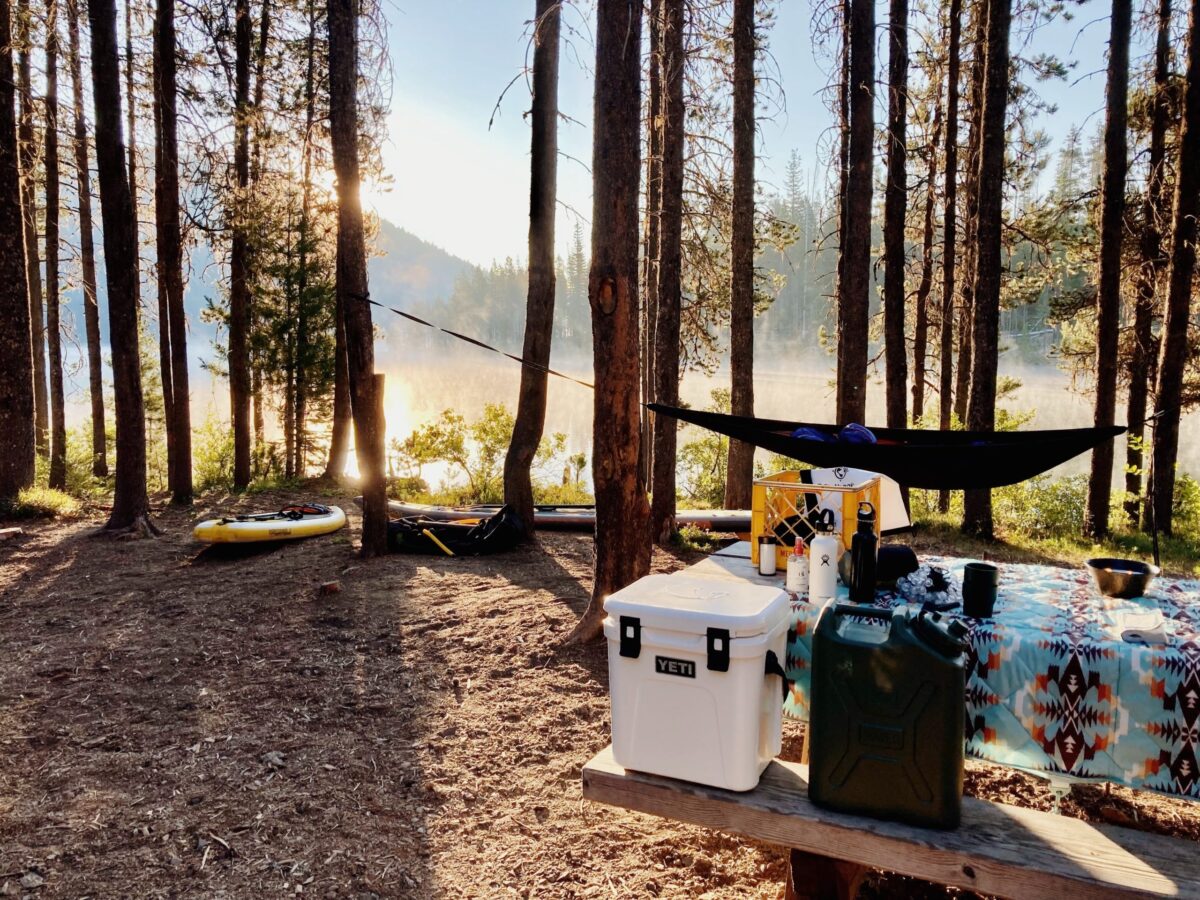No products in the cart.

The Complete Guide to Launch a B2B Podcast

The old way of marketing is dead…
Gone are the days of hassling people and interrupting them, it’s far too easy for consumers today to ignore us. Let’s change that. Me and you. Right now.
Rather than interrupting the content people want to consume, create the content people want to consume!
With over a hundred million people tuning into podcasts, businesses are finding a creative new way to tap into that growth.
Which is pretty cool…
3 Reasons Why You Should Start a Podcast
There are 3 major reasons that are not exactly obvious for starting a podcast. I’ve listed them for you here.

1. Stop Creating Content That Sucks
Does the world need more content? Hell no! It needs better content that people actually like.
The B2B world is way behind B2C in that way.
But we’re coming for you B2C…
Avoid Marketing Myopia:
In 1960 Theodor Levitt, literally wrote the book on marketing in his book Marketing Myopia. You can read more about that in this Harvard Business Review article. He explains historically how nearly every business and industry becomes obsolete and how to avoid it.
Stop Creating Content Like Everyone Else:

Levitt described that the railroad industry didn’t decline because airplanes and automobiles commoditized the transportation market.
They lost market share because they thought of themselves as being in the railroad business instead of the transportation business.
They focused more on selling than marketing to the consumer what they wanted.
We’re All in the Media Business Now!
Today, when consumers consume limitless amounts of content, on their own terms and devices, the battle for their attention has now become the obstacle.
Companies have recognized these developments overtime and are reaching to the same conclusion.
We’re now all in the media business, we just happen to be selling services.

Marketing Myopia is Happening Everyday to B2B Brands
In the internet age we are living through a literal communication revolution and most of us are still marketing the same old boring way we did 10 years ago.
Take advantage of new media! The way people prefer to access the information they want.
2. Content Is King
The phrase “content is king” came from Bill Gates in 1996 when he published this article on Microsoft’s website explaining that content is where he expected much of the wealth would be generated on the internet.
The brands that develop the most relevant content to help the audience they serve will rise to the top in today’s digital internet chessboard.
On the internet, content is like real estate.
The more you create, the more chances people have of discovering what you’re up to.

3. Amplify Your Brand
Your brand is your business reputation.
What better way to build your reputation for creating insanely useful content to help people achieve the results they want?
On a platform that has the potential to reach millions of people to stream and share it is pretty high up there on the awesome scale.
Connect With More People!
 Did you know that the average adult consumes over 11 hours of media content? EVERY. SINGLE. DAY!
Did you know that the average adult consumes over 11 hours of media content? EVERY. SINGLE. DAY!
People are constantly seeking answers or solutions. Podcasting is a perfect media to connect with them.
Launching a podcast will help you take advantage of one of the largest growing media platforms online to connect with more people and amplify your mission.
Take a Look at These Numbers:
- 40% of small business owners listen to podcasts
- 72% of owners with between 100-500 employees do, too!
- 70 million active listeners. EVERY. SINGLE. WEEK
- Along with another 118 million that tune in monthly

Teach Your Niche To People Searching How to Get S@$# Done!
Podcasts are so popular because it’s an easy-to-consume format for both business and personal topics.
Listeners can take it with them from the car to home or to the the office without missing a single second.
People listen to podcasts to learn new “how-to” content like growth tactics for their business and to get inspired by interviews to get better informed on specific topics.
By providing more content to educate and inform your industry you instantly create more value to it.

Create educational content to add value to the audience you aim to serve.
Determine A Goal For Your Audience
Focus your topic on an outcome you want for your audience.
Where are they stuck and what content can you share on a consistent basis to help them achieve the results they want faster?
By concentrating on the outcome you want for your audience and the obstacles that will get in their way – will act as your “northern star” to keep you focused on what content to create.
Some Essentials You Need to Get Started
Podcast Show Art
Now that you’ve decided on your content you need to actually set up your podcast.
First things first, every podcast needs show art.
Just like record labels and CDs, Podcasts require show art too.

There’s 3 Ways To Create Your Show Art…
Whether you want to go through the set up process on your own our hire it out there’s 3 easy paths to choose from.
Do it yourself (ie. FREE)
The cheapest route to design your own cover art on a budget is to go to Canva.com and search Podcast in the search bar (I did it for you click here).
Choose a template you like and just edit the background and text. Then download to export.
Then save it for when we create and add your show to a podcast directory section.

Hire a Freelancer
If you don’t want to waste time creating your own show art a faster option is to hire a freelancer.
There’s a million out there, the easiest is to find on Fiverr.com and search “podcast cover art” (I did it for you click here).
You’ll pay anywhere from $20-$100 for someone to create your graphics for you. But you will need to manage the process and provide the vision, copy, and edit suggestions.

FIVERR Buyers Be Warned!
Fiverr is an amazing platform to get graphics done but it can be a total crap shoot with regards to quality.
Most Fiverr designers are just updating a template or two they have pre designed and results vary greatly on the designer.
Expect to hire multiple jobs before landing on one you actually love.
To get the best results hire a designer based that has a 5 star rating with a high number of reviews like this:

Can’t Someone Just Do This Stuff For Me?
The fastest and easiest path to getting started podcasting is to outsource the startup work to an agency to set up your show art and intro music with voice over talent done for you.
Some agencies can even edit your show, enable hosting and advertising (more on this in a bit).
Head over to C-Suite.media to learn more on available done for you services.
I Want to Podcast But Don’t Want to Set it Up! (CLICK HERE)
Set Up A Hosting Platform
Intro to RSS Feeds:
In technical terms a podcast is nothing more than a string of audio files connected by an RSS feed that allows any user to subscribe to the show and receive notifications that a new episode is available.
Think of it as a blog, only with your voice…
While the RSS feed may be unfamiliar and sound complicated to build, it’s not. That’s where the hosting platform comes in.
The hosting platform will set the RSS feed with subscription capability for you.
Anyone who subscribes to your feed will automatically receive notifications when new episodes are available to download.

Don’t Overthink the Hosting
When it comes down to core functionality of hosting platforms, they are the same, podcasters upload audio episodes to hosting platforms so that subscribers get notifications of new episodes.
The differentiator between podcast hosting platforms comes down to support, storage, and integrations.
Also, don’t stress too much about your hosting, it’s possible to change hosts even after you have launched.
We use Megaphone for our podcasters. It’s easy to use and lets our team set ad spots on behalf of the shows we represent.
Here’s The Catch About Hosting!
Before you choose your hosting provider there are a couple things to know.
Especially if you want the option for integrating ads to monetize your podcast down the road as your podcast audience grows.
If you don’t care about advertising integrations, then any podcast hosting platform will work.
Here’s a list of the most popular to ones choose from.

If you are considering advertising on your show or want to build programmatic ad capabilities into your podcast down the road, there are a few things you’ll need to know before choosing your hosting platform.
Which brings us to how podcast advertising works.
How Podcast Advertising Works!
Before we talk about advertising there’s something we need to be upfront about.
Despite what anyone else might tell you, from our experience, you shouldn’t get into podcasting for the sole purpose of making money.
In fact, it’s hard to do and it takes a lot of time and energy.
What Podcasting Really Is:
Podcasting is an amazing marketing and communications tool first and foremost.
Think of podcasting as a great tool to share your message to the most people.
How Podcasts Actually Make Money
Podcasting is a lot of work and integrating sponsors and ads is an optional way to recoup your time and efforts only when and after you create a powerful audience.
Right now the average CPM for podcast ads for a business audience is around $20-$70.
$50-$70 for live read-ins from what we have experienced in selling.

How to Project Ad Revenue?
Getting paid on ads is based on a CPM bases (or cost per thousand downloads).
The ad payouts are directly tied to the number of downloads your show has per month.
There are also a number of additional variables such as the number of ad spots defined on your show and the ability to fill your ad inventory.
How to Calculate Podcast Advertising Revenue?
Here’s how it works…
A Simple Breakdown How CPMs Work
Let’s say you set or defines 3 ads spots per show (1 pre-roll and 2mid-rolls). So if your selling ads at a $30 dollar CPM that’s $30/1000 downloads per ad spot.
If your episodes downloads are up to 20,000 that would work out to:
$30.00 x 20 = $600 per ad spot x 3 spots= $1,800/Episode.
Assuming you do 4 episodes per month your total monthly revenue could be worth= $7,200/Month.
On a $20cpm @ 3 spots is $60/1000 downloads.
60.00 x 20 = $1200/Episode.

Revenue Summary:
When looking at the numbers you can see why some shows start to do 1 show a week or even daily instead of a month to increase ad spot volume.
But again all of this only happens if you can actually fill your ad inventory.
You also need to be producing a show that has a significant audience size in order to generate any ad revenue on your show.
If you work with an agency (which almost everyone with a large audience does) you’ll also have to factor in the commission % the agency will require to compensate their efforts to sell your ad spots so take the above projections with that in mind.
Why Work With An Agency?
Podcasting can become a full time job to find guests, prep shows, record, edit episodes, and then promoting the show as you are ultimately responsible for your own growth.
Finding advertisers and negotiating media buys for ad placements is another full time job in and of itself and one frankly, most podcasters don’t want to get stuck in the middle of managing.

How Does the Advertising Process Actually Work Though?
For most podcasters, it’s the wild west with regards to advertising.
It’s Pretty Much Agency Dominated
Most podcast ads get negotiated by podcast advertising agencies that negotiate pre-roll, mid-roll, and post-roll advertisements to be inserted as either live read ins.
Live Read Versus Programatic?
Live reads are where the host reads the ad live in the show based on a provided script.
Programmatic ads are automated ads that pause the show for a quick ad (like Hulu and Youtube experience but for audio).

To be represented by an agency to do live read-ins, the rough rule of thumb is that you need to be at about 50k downloads per episode.
So for most niche b2b podcasts we are left in the dark for live read-ins, which leaves programmatic ads as the default if you want to monetize your podcast with ad integrations.
Programatic Ad Supported Hosting Options:
2 Options to Consider:
Megaphone and soon to be Libsyn are the 2 hosting providers that have programatic ad enabled options.
Libsyn is currently in the process of acquiring Advertise Cast to offer programmatic ads to be placed on hosted shows. By the time you’re reading this – this feature will likely be in place.
These are the 2 main podcast hosting sites that have built-in programmatic ads for brands to go in and automatically schedule ads to be run on any show that contains the audience demographic they want to feature their ads against.

Hosting Summary:
Whether you go through Libsyn or Megaphone your still operating on your own to find, negotiate, and fulfill advertising contracts as both programmatic options will only fill a certain % of your overall inventory without a designated sales team actively selling and negotiating contracts for their network.
Which again, leads us to a third and more comprehensive option done for you.
C-Suite Radio
Before reading on, NOTE: I’m the CMO of The Network that owns C-Suite Radio so I am incredibly biased to tell you how wonderful of an option this is. Not just because I see everyday, how awesome it is, but because I’m also paid to tell you so.
Disclosure aside, let me tell you why you should consider it for your B2B podcast.
C-Suite Radio Was Built For B2B Podcasters, By B2B Podcasters
C-Suite Radio is a designated network that caters to business podcasters.
Because at the end the day you have a business to run, and you can let us do the heavy lifting when it comes to getting set up, helping you get your show on directories, and our dedicated team helps sell advertising and technical support so you don’t have to spin your wheels when growing your podcast audience.

Learn more about “Done For You” podcast services Here
How to Get Your Podcast on Directories?
Podcast Directories are where most people go to download podcasts.
It’s like the movie theater for movies. Distribute your podcast where people are already going to discover and find new shows.

Podcast Directory Instructions:
Right now, Apple Podcasts is the goliath in the podcast industry, stitcher comes in second there are a handful of others that make sense to get listed in as well.
If you want a detailed description of how to get listed in each one and links for where to submit your show, CLICK HERE and follow the instructions with links for where to submit your RSS feed.
All you’ll need is to copy and paste your RSS feed in the instructions in the link and wait for your podcast to get approved and voila – your show will appear in all of the major places people are already searching for amazing new podcast content like this:

Booking Guests:
Reaching out to potential guests can feel like an intimidating task in the beginning but think of it from the guest’s point of view.
They are being asked to talk about their business and are looking at it like a media opportunity.
You may be surprised how many doors open up and how receptive people are to being featured as a guest on your podcast.

Download our Free Podcast Booking Letter: CLICK HERE
Click the link and download the same letter we use that have booked guests like Arianna Huffington, Seth Godin, Pierce Morgan, General Wesley Clark and many others.
Podcast Marketing 101
If you’re interested in some simple tips to promoting your podcast check out The 9 Tactics Podcast Experts Use to Grow Their Audience.
Podcasting has been a great way for us to connect with tens thousands of people on our company podcast.
The shows on our network reach millions collectively.
Podcasting is definitely a great way to take advantage of emerging media for businesses that are willing to invest in the time and effort to grow their audience.
PS. If you need more information or have questions on getting started feel free to contact me at C-Suite.media.
P.S.S. Go kick some butt!
For more information visit tylerhayzlett.com

























